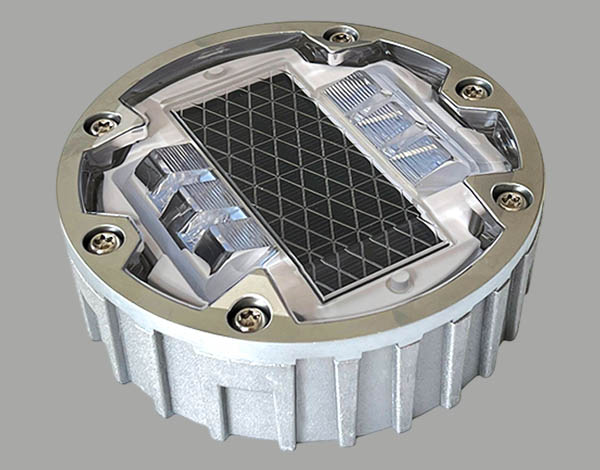As an important part of modern road safety facilities, solar road studs can not only improve the safety of night-time driving, but also realize energy saving and environmental protection through solar technology. However, to ensure that solar road studs are maximized in practice, attention must be paid to their pressure resistance, durability and robustness of installation. Although the first two points are often widely discussed, the details of the installation process are often overlooked, which is precisely the main reason for the high rate of stud dislodgement. Below we will analyze the core points that need attention in the installation to help improve the quality of the installation.
1. Solar road stud installation of basic requirements
One of the core functions of solar road studs is to withstand the pressure of vehicles and bright light. Resistance to high pressure means that the spike can remain stable in frequent traffic, while durability to bright light ensures that it will not prematurely deteriorate or fail in direct sunlight. These features are often realized through high-quality materials and advanced designs, such as the use of UV-resistant polycarbonate shells and high-intensity LED light sources.
2. Strong installation: the key to installing solar road studs
While pressure resistance and durability are the basics, it’s the solidity of the installation that ensures the long-term effectiveness of solar road studs. Below are a few important points to note during the installation process:

2.1 Keeping the Pavement Clean
Before installing solar road studs, it is important to ensure that the road surface at the installation location is smooth and clean. Any dirt, oil or debris will affect the contact area between the bottom of the spike and the pavement, thus reducing adhesion. Cleaning the road surface not only helps to improve the stability of the spike, but also extends its service life.
2.2 Selection of suitable adhesive
The choice of adhesive is crucial to the installation of solar road studs. Currently there are two main types of adhesives on the market: adhesive asphalt and epoxy resin adhesive.
- Adhesive asphalt: its advantage is that the curing time is short, suitable for rapid construction. However, when the road surface temperature reaches 70°C or 80°C, the asphalt will soften, causing the road studs to loosen or even fall off. In addition, the softened asphalt may adhere to the reflector of the spike, affecting its reflective effect.
- Epoxy Resin Adhesives: In contrast, epoxy resin adhesives offer higher temperature resistance and stronger adhesion. Despite their longer setting time (usually 4 to 6 hours), their stability and durability are significantly better than asphalt. When selecting an epoxy adhesive, it should be noted that there are hundreds of different types on the market, but only a few are suitable for stud installation. In addition, the mixing ratio of adhesive and hardener must be precise to ensure optimum results.
2.3 Allow sufficient time for the solar road studs to set after installation
Epoxy adhesives have a long setting time, so it is important to close the road for at least 6 hours after installation of the spike to ensure that the adhesive is fully set. This step, while seemingly simple, is the key to preventing the spikes from falling off. Neglecting this step may result in the spikes coming loose within a short period of time, increasing maintenance costs and safety risks.

3. Other installation considerations
In addition to the above points, the following points should be noted when installing solar road studs:
- Ambient temperature: the performance of epoxy resin adhesive is greatly affected by the ambient temperature. At low temperatures, the curing time of the adhesive will be extended, while at high temperatures, the adhesive may cure prematurely, affecting the adhesion effect. Therefore, the installation should be based on local climatic conditions to choose the appropriate glue and construction time.
- Construction personnel training: Installation of solar road studs requires certain professional skills and experience. The construction personnel should receive professional training to understand the mixing ratio of glue, construction steps and precautions to ensure the quality of installation.
- Regular maintenance: Even if properly installed, solar road studs may loosen or be damaged for various reasons during use. Therefore, regular inspection and maintenance are necessary to ensure their long-term effectiveness.
As a professional road safety facility supplier, we are committed to developing, designing, manufacturing and exporting a wide range of high quality road safety products. We understand the importance of solar road studs in road safety, so we not only provide high quality products, but also offer professional installation guidance and technical support to our customers.Whether you need a customized road safety solution or an improvement to an existing product, we welcome your enquiry at any time. Our team will be happy to assist you in ensuring that your road safety installation achieves the best possible results.


Leave a Reply